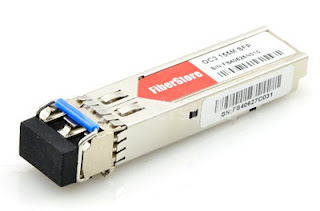Compatible transceiver modules are highly favored by designers because of ease of use and affordability. Features like the monitor photo detector (MPD) for eye safety and the high-speed GaAs PIN photodiode are often presented in compatible modules. But many customers don’t trust OEM or alternative party compatible transceiver module. Even thought we have talked with them several times about our 3-party compatible modules for Cisco and other famous brand like Juniper, HP, extreme. Here I’d like to dig into some features of compatibility transceiver modules. Therefore customers will hold an objective attitude about the topic after going through the whole text.
Two Factors Concerning Compatible Transceiver Modules
Compatibility depends on two factors. Take compatible SFP transceiver module as an example, does a SFP need DDM function? DDM is short for Digital-diagnostic-monitoring that provides user with critical information concerning the status of transmitted and received signals. Obviously a SFP with DDM is better than one without a DDM. All you have to do is to figure out whether you need that function or not. Then make the right selection.
Does the host equipment check the ID code and lock out alternative party components? Certainly most Cisco core equipment and routers do lock out all but Cisco ID SFP modules. We do not hear any news about what Cisco equipment does and does not lock out third-party SFP.
How Does Compatible Transceiver Module Work?
Each module is unique and holds its own information in EEPROM; this memory is coded with specified identifiers such as part numbers and manufacturers details. When the device is installed, the host device then checks the memory for the correct information to confirm compatibility. A hot-pluggable device is always ready to work immediately after installation. It requires no time to program or no installation woes to figure out. That’s why most designers prefer to use compatible transceiver module.
Main Features of Optical Transceivers
Transceivers are hot pluggable so that they can easily take the place of the original transceiver without powering down the whole equipment. For example, a Finisar FTLF1323P1BTR transceiver may be compatible with the original Finisar SFP transceiver. This device, typically, have built-in diagnostic features, and duplex LC connector interface. This particular device will reach a transmission length of 15km and operates at a wavelength of 1310nm. The following image shows an outlook of FTLF1323P1BTR.
In general, most transceiver modules will connect with the existing electrical circuitry of the module. The transceiver module may use optical or copper network cords to accomplish this goal. Media converters, Ethernet switching, routing equipment, and distance extenders may all be featured along with transceivers. The best part about compatible transceivers is that they can be easily removed and replaced in the host device.
However, many customers may encounter a situation—why my compatible transceiver module does not work with the host devices. This is a common problem, a large amount of host devices do not have a firmware check for compatibility, this is known as an “open platform”. Many compatible transceiver modules are sold as compatible when in fact they are open platform, they will work in many host devices but not in any that require coded transceivers. OEM SFP transceivers are coded specifically to suit each host device to avoid this problem. Even Finisar’s range of FTLF1217P2BTL and FTLF1323P1BTR SFPs are covered.
Summary
Keep in mind that the compatibility has nothing to do with the functions of the transceiver, only in recognizing ID code and selecting to lock out third-party transceiver or not. FS.COM offers a full range of compatible transceiver modules. Till now, we did not get any negative feedback from our customers for our compatibility transceivers. Every designer should choose the devices that work best for them in order to maximize the use of the devices in their designs.

